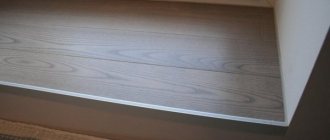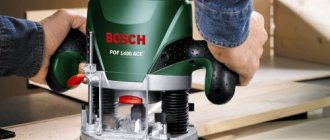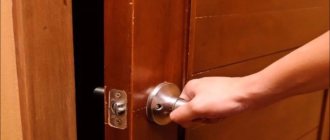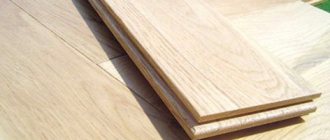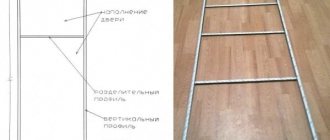A plastic balcony door is a reliable and durable design, but no matter how high-quality and reliable the design is, it still requires periodic repairs. You can do most of the problems yourself with a minimum number of tools, but there are jobs that only an experienced specialist can handle.
In this article, we will figure out what types of work you can do yourself, and which ones you can entrust to an experienced craftsman.
In what cases is it necessary to contact specialists?
Repairing a balcony door with your own hands is not possible in the following cases:
- The profile is cracked. Initially, it is necessary to assess the extent of the damage, and only then make a decision about calling a specialist. If the crack is through or its size exceeds 1 mm, then you should call a specialist (you may even need to replace the balcony door), but if the glazing bead is cracked, then you can cope with its replacement yourself.
- In case of damage to double-glazed windows. Repairing broken window glass on a plastic balcony door with your own hands is impossible due to the fact that in all plastic structures there is air or inert gas inside the double-glazed windows for sealing. For these types of work, it is worth calling a specialist to take measurements of the double-glazed window and submit an application for the manufacture of a similar one.
You can remove a double-glazed window, take measurements and order the same double-glazed window yourself (instructions below), but often such savings do not make sense, firstly, there is a possibility of making an error in the measurements, and secondly, most companies carry out measurement and installation as a gift to purchasing double glazed windows.
- Damage to fittings. The first step is to measure the extent of the damage. For example, you can repair a balcony handle or lock yourself, but only a specialist can repair broken ventilation or alignment mechanism slats from the canopy profile.
How to determine that the installation was done correctly and efficiently
If the door installation is carried out according to all the rules, then you will not need to adjust it yourself soon. But when you identify the first signs of a malfunction, you should start eliminating them or call a professional technician.
When installing a plastic door on a balcony, you must carefully monitor the installation process and ensure that workers follow all instructions. Demand that they perform high-quality installation work.
Replacing a broken handle
If the balcony handle is faulty or requires replacement, then the procedure for performing the work is as follows:
- It is necessary to rotate the decorative plastic cover. To do this, slightly pull the cover towards you and turn it to the right or left and install it in a horizontal position.
- Using a screwdriver, unscrew the two screws.
- We take out the screws and remove the handle.
- We install the new handle in place of the old one. It is worth noting that when we removed the old handle it was in a horizontal position, therefore, we install the new handle in the same horizontal position. We turn the handle to a horizontal position, move the decorative cover, insert it into the hole and tighten it with screws.
- We put the decorative cover in place. Installation completed.
Features of PVC structures
Currently, most structures for window and balcony openings are made from PVC profiles. The company that installs the double-glazed windows also carries out technical control during the warranty period and eliminates faults free of charge. However, after the warranty expires, the likelihood of breakdowns only increases, so it is important to understand how the balcony sash is repaired.
Repair of the swing system lock on the loggia.
Hinged sash with additional secure locks.
Sliding system lock repair.
Sliding opening system.
Replacing the lock
A situation may arise that the handle has rotated 360 degrees, thereby breaking the gear that moves the bar on which the axles are located. In this situation, it is necessary to change the entire bar.
Instructions for replacing the lock on a balcony door:
- The first step is to determine what kind of lock it is in order to order a new one. All the necessary information (name of fittings and specifications) is on the bar. Can be purchased at any company that sells plastic windows and fittings.
- It is necessary to move all the trunnions on the metal bar to the open position, that is, install it in the middle.
- Unscrew all the screws on the bar and remove the handle according to the instructions above.
- Remove the roller and microlift (handle opening blocker).
- We remove the bar itself.
- We take a new bar. The lock is initially locked for protection during transport. To unlock, you need to carefully break off the teeth with a screwdriver (see picture below).
- We install a new strip on the door leaf. The first fixation is made on the balcony handle (the handle should be in the open position).
- Next, carefully hammer in the latches that secure the bar.
- We tighten all the elements that were removed during dismantling. It may happen that when installing a new strip, the trunnions and the latch will not match. In this case, all these elements must be reset to the required level. At this point the repair can be considered complete. We recommend that you read the video instructions below; everything is discussed there in more detail, with a consideration of the nuances.
Mandatory door hardware
If we consider the mandatory door fittings, then we can distinguish several components:
- Loops. These are special devices on which the door “sits”. They are movable because they provide opportunities for opening/closing doors. Also, they are subjected to a serious load every time, which leads to premature wear;
- Door handles. They can be supplemented with a locking mechanism to fix the position of the door and close it (for example, so that small children do not accidentally go out onto the balcony). But they always have a latch, which is a special clamp. It is installed at the factory regardless of whether the kit will be supplemented with a locking mechanism;
- Seal. It performs the same functional load as the seal on the windows. It is thanks to it that the surfaces adhere tightly to each other. Also, the seal wears out from time to time, so it must be changed periodically;
- Fittings. This is the general name for all the essential components that are used in the production and manufacture of the door. As a rule, such products are characterized by a high degree of reliability, so they almost never need to be replaced. Exceptions include individual structural components.
Construction of a plastic window assembly: glass, profile system, fittings
Loops
The key and fairly simple mechanism of all doors is the hinges. They perform the main function of this structure - they provide opportunities to open or close doors. The hinges take on the entire load. When the gate opens, serious pressure is exerted on them (its entire mass). Therefore, they must be of the highest quality possible, as well as periodically checked for functionality and serviceability.
The loop includes 3 key components. The first is the connecting sleeve. This device is a component that connects the door and the profile. The second component is the pin. This is the basis of the structure, which is level and motionless. And the hinges themselves can rotate. And the last elements are fastenings. They serve only one purpose - to secure the device.
Very often, hinges are not used in the form in which they are produced by the manufacturer. As a rule, they are also supplied with special decorative overlays so as not to spoil the appearance. Old doors were installed without such linings; the hinges looked rather ugly. Now they are covered with decorative elements. By the way, these elements also perform protective functions. The hinges are lubricated and the attachments protect them from the penetration of small debris and dust into the lubricant, which significantly increases durability.
Despite the fact that the doors themselves are plastic, the hinge components are made of durable metal alloys. They can withstand loads of up to 120 kg. Plastic hinges will not withstand such a load.
Typically, only 2 hinges are used when installing a standard door. However, if a massive structure is installed, then 3-loop fittings are used. But in apartments and even private houses, massive structures are usually not installed, so manufacturers produce devices with a 2-loop base.
Decorative overlays for hinges
Fastening must be carried out in accordance with established technology. If you do not adhere to technology, the door will tilt or deform. Therefore, it is not recommended to install the appropriate structure yourself; it is better to entrust the process to specialists. Some individual fittings classified as additional can be installed by yourself, but the main parts must be installed by professionals.
Mikhail Voronov
Ask a Question
Another important point is that the structure needs to be serviced from time to time. It is necessary to remove the decorative trims, clean the surface, remove old grease from it, then add more oil. This will make the loop last longer. It is better to carry out maintenance of all hinges at the same time 1-2 times a year.
Fittings
The fittings are a set of components that are located along the entire perimeter of the structure from the handle. It provides transmission to the trunnions, which are then returned to the handle to close and secure the shutter. If there is a locking mechanism, then it also refers to the fittings. In modern doors, the fittings are made with an additional option - the ability to leave the door in the ventilation position so that fresh air can get inside.
The fittings are made mainly from reliable metal alloys using modern technologies. That is why it rarely fails. But if this happens, then it is recommended to contact special specialized companies that provide relevant services. It should also be noted that the fittings are present not only in doors, but also in window structures. Many consumers are often confused about this issue and buy the wrong kit that is required. Especially if the windows and doors are installed from the same manufacturer and from the same series.
When choosing fittings, consumers will need to pay attention to several key points:
- Products must be reliable and durable. It is advisable to give preference to the same manufacturer who made the door.
- The product must have documentary support. These products are mandatory, therefore characteristic GOSTs are present. And the presence of documents, such as certificates, prove compliance with specified state standards.
- Products must be compatible with the profile. For example, European manufacturers use standard 16-centimeter kits. Therefore, it is very convenient to buy replacement fittings, since all sets will be compatible. However, if you cooperate with dubious manufacturers, then if repairs are necessary, you will need to search for a long time for compatible replacement kits.
Some experts recommend considering assembly technology. If you buy a kit that is easier to install, then the services of specialized organizations will cost much less. And the repair process will take less time.
Glass replacement
Instructions for replacing glass on a balcony door:
- Using a chisel, thin spatula or knife, remove the glazing beads. First the long one, then the rest in order of priority.
- Next, using a spatula or any other suitable tool, carefully pull out the glass.
- Next, insert the glass and place the support pads as in the diagram below.
- Carefully close the door and if no rubbing occurs, hammer in the glazing beads; if there is rubbing, then it is necessary to further adjust, you may need to additionally add support pads, in some places it is possible to have two at once.
How to identify installation defects
An ordinary piece of paper from a school notebook will help you determine the moment when your balcony door requires adjustment.
Place the paper on the open door frame, then close the door and pull the paper towards you. Repeat this experiment around the perimeter of the door frame. If you easily pulled out the piece of paper, the door frame is not tightly pressed against the frame.
To identify the distortion of the door, you need to outline it with a pencil. The door must be closed.
Then, after opening it, check whether the drawn line is parallel to the frame or not. If not, then the door is misaligned.
By using these simple methods, you will identify problems in time and begin to eliminate them. If the warranty period has not expired, it is better to call a specialist.
The shutter opened in two positions and does not close
One of the most common problems with plastic structures is the opening of the sash in two positions simultaneously (rotary and inclined). This happens when the handle is moved to a vertical position when the door is already open, which entails the upper opposite corner of the door falling out of the hook and sagging occurs, while the handle is blocked and the door cannot be closed.
To avoid such situations, blockers are used that prevent the handle from being rotated when the sash is open.
The solution to this problem is very simple - just press down the upper corner located near the hinge of the door frame and move the handle to a horizontal position.
The door is blocked and will not open
If, when you try to open the balcony, the handle does not rotate at all (rotates no more than 30 degrees), then you must perform the following steps:
- Grab the balcony handle with one hand and the sash at the top hinge with the other.
- We pull the sash at the top hinge towards ourselves while turning the handle. The door opened, but in the tilt-and-turn position.
- Next, you need to press and place the sash lock vertically down and turn the balcony handle up 90 degrees.
- The next step is to press the sash as tightly as possible against the hinge and return the handle to the horizontal position. The door is fixed.
The door creaks
PVC plastic balcony doors creak for three reasons:
- Adjustment of canopies and clamping is necessary;
- metal fittings are rusty;
- lack of lubrication.
Instructions for adjusting the door are shown in the instructions above.
Let's look at lubrication and corrosion control methods.
A universal and effective means of combating corrosion is a product called WD-40. Available in different capacities in the form of an aerosol can.
Inject WD-40 into the mechanism precisely and wait half an hour. Usually this time is enough for the product to eat away the rust. Next, use a rag or sponge to remove all dirt and apply lubricant precisely.
Replacing the seal
On average, the seal on a balcony door is replaced every 2 to 3 years, but a high-quality seal can last 5 years. The seals have different configurations, it is important to purchase an elastic band that will fit your door; to do this, you need to slightly remove the edge of the seal and cut off a few centimeters. Then take the cut sample and buy a similar one.
Seals are sold by the meter, it is worth taking with a small margin of 10-15%.
Instructions for replacing the seal:
- Remove the old seal.
- The groove is cleaned of dirt with an alcohol-containing solution.
- Next, insert the seal into the groove along the perimeter from the top corner.
- After passing the perimeter, cut off the edge of the elastic 10 mm larger and insert it into the groove so that it fits tightly with the beginning of the rubber cord.
Important!
You should not put the seal on the glue, otherwise cleaning the groove will be a problem the next time you replace it.
Common problems and why they occur
Plastic balcony doors have been widely used as balcony doors for several years now. During this period, companies performing technical and warranty maintenance of window and door mechanisms were able to easily compile a list of the most frequently occurring problems requiring adjustment of balcony doors.
Sagging under its own weight - the door leaf begins to catch on the threshold. At first almost imperceptibly, over time it becomes more and more obvious.
The sagging of the balcony door is caused by the natural mechanism of sagging hinges. The weight of such a sash is quite considerable and over the years the hinges get tired of holding it. The rate at which this problem occurs depends on the manufacturer and material of the hinges, as well as on the number of chambers and the thickness of the glass.
If you live in a climate with sudden changes in temperature and humidity, and your balcony is not reinforced with additional thermal insulation materials, be prepared for the door to begin to jam in the middle. This is how the door leaf moves to the side, towards the frame.
The next common problem is that the balcony door no longer fits tightly to the frame when closed. This problem not only causes inconvenience during use, but is also dangerous to the health of apartment residents. An unplanned draft in the middle of winter is a very unpleasant occurrence.
The cause of this problem is age - the period of use of the mechanism. Over time, the parts responsible for pressing the door leaf to the frame weaken and need to be adjusted.
Poor quality materials and rough handling will cause the door handle to become loose or even fall off. This problem is also not difficult to fix.
Other possible malfunctions in mechanisms occur much less frequently; some require the intervention of specialists.
Balcony door diagram.
Sealing small cracks
To repair cracks and scratches you will need a cleaner, filler and liquid plastic.
Instructions:
- Defects, cracks and the area around should be washed with soapy water and wiped dry.
- Next, the defect is treated with a cleaner. You don't need much of it since it acts as soil.
- We fill the defect with liquid plastic and level the surface with a rubber spatula if the crack is large or polish it with a paper napkin if it is small.
Do not use colored fabric or synthetic napkins with Cosmofen liquid! Only paper ones, since Cosmofen dissolves paint and synthetic fabric.
